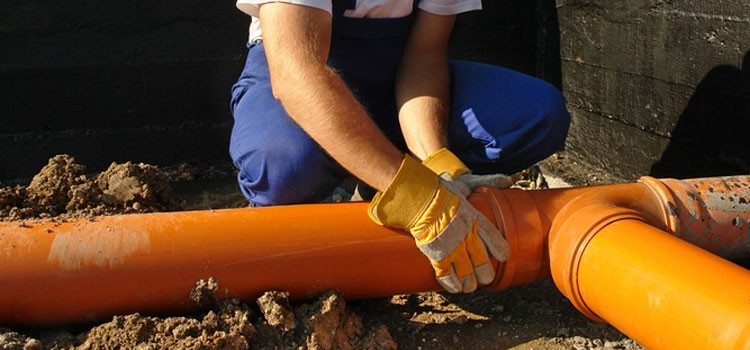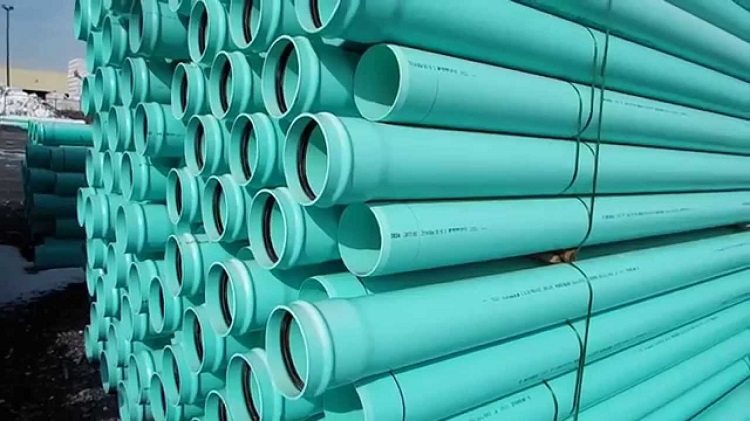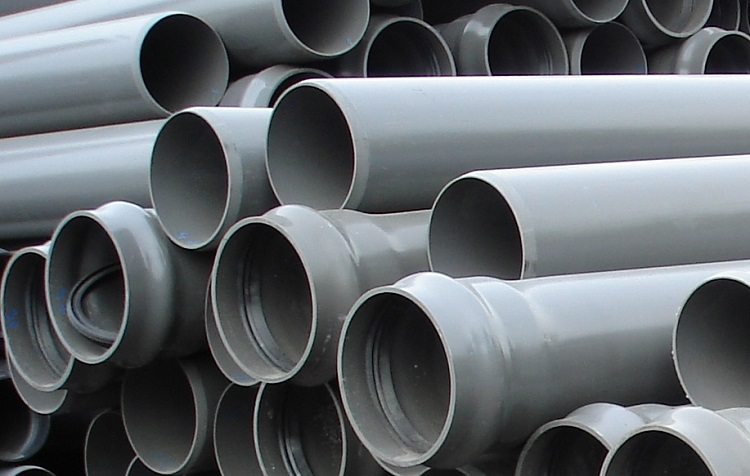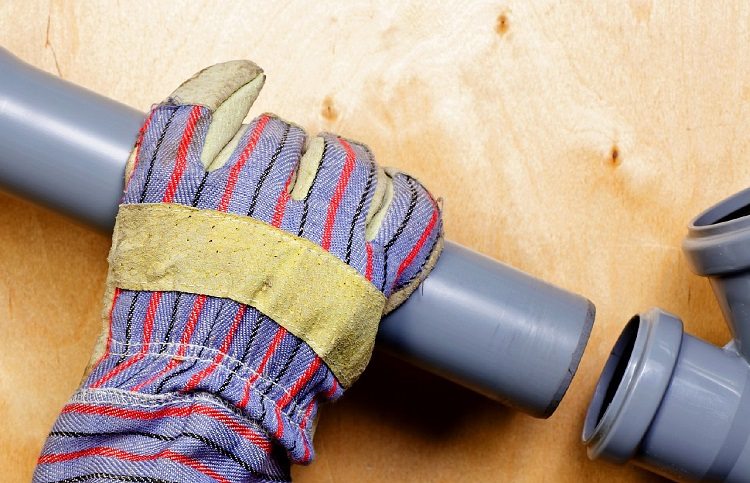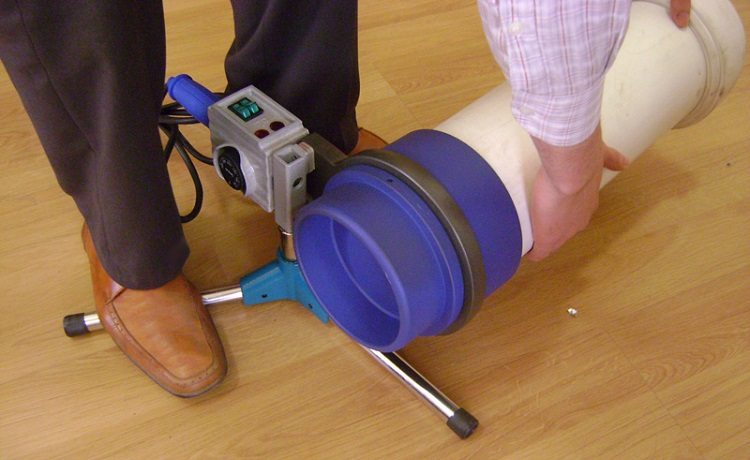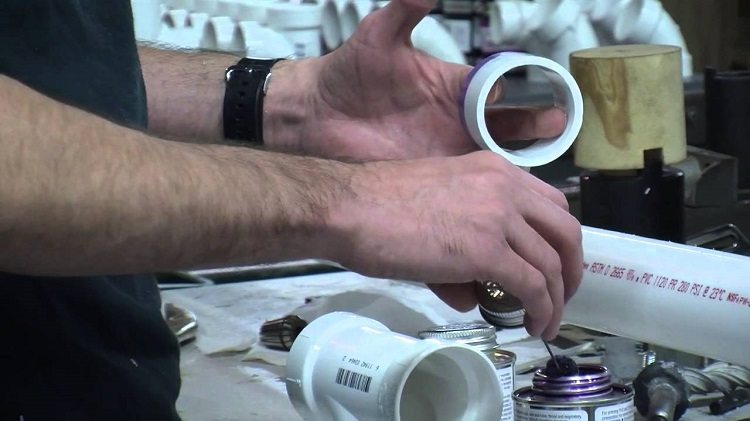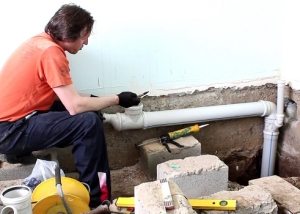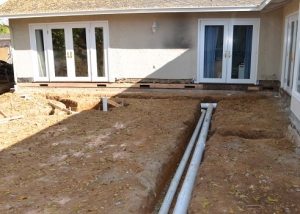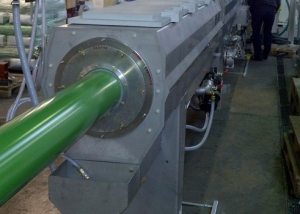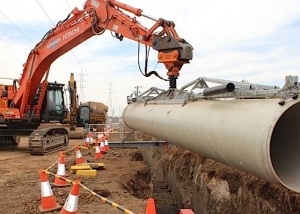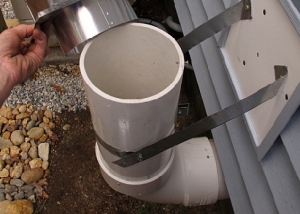Today, plastic is most popular for the production of sewer pipes. Elements of systems made from it that carry out the removal of human vital products are characterized by a small mass and resistance to aggressive environments, and their processing does not require the use of special tools. But for proper installation, you must have knowledge, how do plastic sewer pipes connect.
Content
Types of plastic sewer pipes
The raw material from which these products are made largely determines their type connections. Therefore, this issue should be discussed in more detail.
According to the material, polymer sewer pipes are divided into several types.
Polypropylene (PP). They are resistant to high temperatures and have a long service life (up to 100 years). The combination of these characteristics allows the use of PP pipes to create an internal sewage system. In external networks, it is not recommended to use these products, since polypropylene is characterized by increased softness, which can lead to deformation of the pipeline during operation.
The advantages of PP pipes include:
- high diffusion resistance;
- resistance to alkalis and acids;
- high heat resistance (temperature of effluents can reach 100˚С);
- mechanical stress leads to deformation PP pipesbut not to break them;
- environmental Safety.
Do not forget about the following disadvantages of such products:
- poorly tolerate exposure to ultraviolet radiation;
- high elasticity. This property requires thickening of the walls when a plastic pipe is laid in the ground.
Polyvinyl Chloride (PVC). Such pipes are used to create gravity sewer systems where sewage is moved due to the slope of the pipeline branches and its own weight. These products are durable and UV resistant. But they are characterized by poor tolerance to aggressive environments and temperature extremes. The process of burning polyvinyl chloride is accompanied by the release of toxic phosgene gas.
To correctly select PVC pipes, taking into account the expected operating conditions, carefully read the table below.
Table 1 Strength class (symbols "SN *") PVC pipes, depending on size
| SN8 | SN4 | SN2 |
Nominal diameter of pipes, mm
|
|||
| The weight of one pog. meters, kg | Wall thickness mm | The weight of one pog. meters, kg | Wall thickness mm | The weight of one pog. meters, kg | Wall thickness mm | |
| 58,2 | 18,4 | 48,7 | 15,4 | _____ | _____ | 630 |
| 36,3 | 14,6 | 38,9 | 12,3 | 24,7 | 9,8 | 500 |
| 23,2 | 11,7 | 19,5 | 9,8 | 15,8 | 7,8 | 400 |
| 14,3 | 9,7 | 12,0 | 7,7 | 9,75 | 6,2 | 315 |
| 8,98 | 7,3 | 7,69 | 6,2 | 6,08 | 4,9 | 250 |
| 7,44 | 6,9 | 6,02 | 5,5 | _____ | _____ | 225 |
| 5,77 | 5,9 | 4,84 | 4,9 | 3,87 | 3,9 | 200 |
| 3,69 | 4,9 | 3,14 | 4,0 | 2,56 | 3,2 | 160 |
| 1,74 | 3,2 | 1,81 | 3,4 | 1,46 | 2,7 | 110 |
Helpful information! The higher the SN, the higher the stiffness of the plastic product. SN2 pipes are used for laying in areas where traffic loads are generally absent.But products of class SN8 can be laid in places with heavy vehicle traffic.
HDPE pipes. The acronym "PND" refers to low-pressure polyethylene. The elements of the sewage pipeline made from it have the following advantages:
- light weight;
- resistance to hydraulic shock;
- well tolerate the effects of low (up to - 70˚С) temperatures;
- at high temperatures they do not lengthen and do not expand;
- low coefficient of thermal conductivity;
- non-exposure to aggressive environments;
- long term of operation.
HDPE pipes have fewer minuses. The main disadvantage is the low resistance to high temperatures. However, cross-linked polyethylene can withstand + 400 ° C.
Of the other negative properties it is worth highlighting:
- under the influence of ultraviolet radiation, attractive characteristics are lost;
- low mechanical strength.
Therefore, using such pipes for an external sewer system, you need to hide them from the sun.
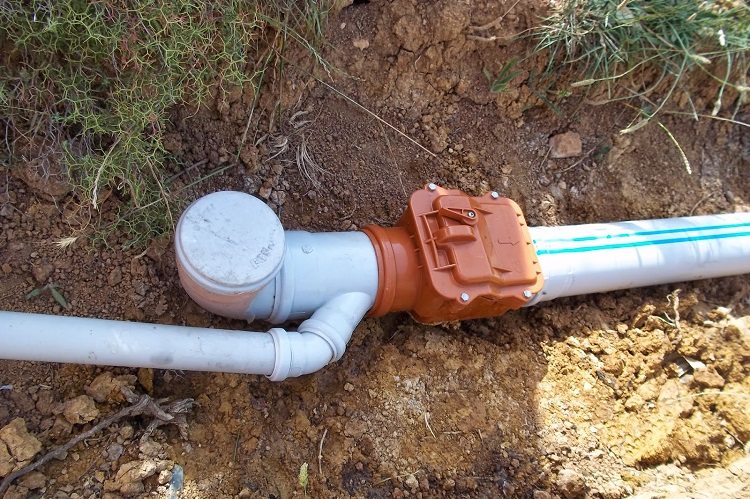
Plastic pipes are suitable for external sewage, but they need to be protected from ultraviolet radiation.
How to connect sewer plastic pipes
Joint plastic sewer pipes It is one-piece and one-piece. The first is performed by thermal welding, and the second by means of sockets.
Thermal welding. This is a proven, reliable way to connect polyethylene and polypropylene pipes without sockets. For its implementation, thermal couplings are used - special bushings. Under the influence of high temperature that occurs when electric current flows through a conductor with high ohmic resistance, such elements hermetically compress plastic pipes. Thus, the impossibility of seepage of sewage outside is guaranteed, and the penetration of groundwater into the sewer system is excluded. Only steel pipes can be fastened with electric welding.
Bell-shaped connection. This is a more preferred method of articulating sewer pipe elements. Here, one part or pipe is simply inserted into another. Seal the socket joint followed by a resinous cord, cement or rubber sealant, as well as bituminous putty. The outer diameter of modern euro-pipes has a smaller diameter. This design solution facilitates articulation in hard to reach places. Similarly, systems are mounted and from plastic corrugated pipesintended for water disposal.
Glue connection. This method is mainly used for PVC pipes. It is performed using special glue. Professionals prefer the following brands of such a substance: “Mars”, “Phoenix”, “Vinylit” and “Tangit”.
Soldering polypropylene pipes
Products of this type are most often connected by this method. It involves the following actions:
- nozzles with a diameter corresponding to the value of this parameter of the connected pipes are installed on a special soldering iron;
- the nozzles are heated (the required temperature and heating time are indicated in the documentation for the soldering iron), after which the pipe and fitting are put on, into which it will subsequently be inserted. Warm both parts up until their edges become viscous;
- then the pipe is inserted into the fitting and pushed into the socket.
Important! This must be done without rotation of the mating components.
In the process of cooling polypropylene fittings and pipes are fused together. The connection thus formed will be one-piece. It follows that, if necessary, this segment of the pipeline will have to be cut.
And one moment. This method is more suitable for large diameter pipes. If we are talking about products with a small value of this parameter, it is more advisable to use plastic sewer pipes fitting. In this case, the strength of the joints is not inferior to their reliability provided by welding / soldering polypropylene.
DIY PVC pipe glue
The question of how sewer plastic pipes made of polyvinyl chloride are connected is especially relevant. The fact is that the outer sections of gravity drainage systems, including suburban cottages, are carried out today mainly on their basis. And this is not a tribute to fashion. Pragmatic considerations come to the fore. In addition to the low cost of installation, owners of private houses take into account that PVC pipes can be used both for above-ground and underground pipeline. And in some cases, this factor is crucial.
As mentioned above, an adhesive joint for products of this type is most preferred. It is suitable for pipes with a diameter of 6 ... 400 millimeters. If we compare this method with the welded and mechanical (using fittings), then you can find some differences and similarities:
- unlike mechanical, adhesive bonding is much less material-intensive, while in terms of energy consumption these methods are comparable;
- gluing is not inferior in quality, speed and material consumption of the work performed welding plastic products. However, this method does not require the use of special equipment. But even if it is at hand, it should be remembered that the unit for welding PVC pipes consumes electricity in a fairly large amount. And this leads to an increase in cost. system installation.
The advantages of gluing are obvious, but the main thing here is not to save when buying an adhesive, because it is he who is responsible for the tightness of the system.
The gluing algorithm for polyvinyl chloride sewer pipes is as follows:
- their surfaces at the places of gluing are sanded and then degreased using a composition based on methylene chloride. Often this substance is included in the set of glue for PVC pipes. It performs two functions: degreases and partially dissolves polyvinyl chloride, thus contributing to a more durable bond;
- with a brush or swab on the prepared pipe ends, the above-mentioned special glue is applied. Then the pipes are inserted into each other. Evidence that this operation is performed correctly is the appearance of a glue roller at the junction.
At the final stage, in order to achieve absolute tightness of the connection, the pipe joint is additionally coated with glue.
Helpful advice! The adhesive properties of this substance in air are quickly lost. Therefore, no more than a minute and a half should pass between the procedure for applying glue and fixing the connected elements of the pipeline.
Having mastered the basic methods for arranging joints of plastic pipes, you can easily cope with any repair of sewage.
